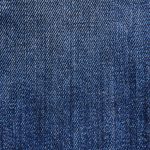Are you looking to prioritize quality when it comes to fabric? Look no further!
In this article, we will provide you with 9 essential tips to help you make the best choices.
From considering fabric type and thread count to evaluating durability and strength, we’ve got you covered.
With our expert advice, you’ll be able to navigate through the world of fabric and make informed decisions that align with your needs.
Table of Contents
Fabric Type
Choose the right fabric type for your project to ensure optimal results.
When selecting fabric, two important factors to consider are fabric durability and fabric softness.
Fabric durability refers to how well the fabric can withstand wear and tear over time. If you’re working on a project that requires frequent use or exposure to rough conditions, it’s important to choose a fabric that’s durable and can withstand these challenges. Fabrics made from natural fibers like cotton and linen tend to be more durable compared to synthetic fabrics like polyester.
On the other hand, fabric softness refers to how comfortable and pleasant the fabric feels against the skin. If you’re working on a project that will be in direct contact with the body, such as clothing or bedding, it’s essential to choose a fabric that’s soft and gentle. Fabrics like silk and bamboo rayon are known for their luxurious softness.
Thread Count
When it comes to fabric quality, thread count is an important factor to consider. Knowing the optimal thread count for your desired fabric can help ensure the durability and longevity of your garments or linens.
However, there are common misconceptions about thread count that need to be addressed in order to make informed decisions about fabric quality.
Importance of Thread Count
To ensure high-quality fabric, it is essential for you to pay attention to the thread count. Thread count refers to the number of threads woven into one square inch of fabric. A higher thread count generally indicates a softer and more durable fabric. However, it is important to note that thread count is not the only factor to consider when purchasing fabric. Other factors such as the type of fiber used and the weave of the fabric also contribute to its overall quality.
Below is a table highlighting the importance of thread count in fabric:
| Thread Count | Fabric Quality |
|---|---|
| Low | Rough and less durable |
| Medium | Average softness and durability |
| High | Smooth and highly durable |
Optimal Thread Count
To determine the optimal thread count for your fabric, consider various factors such as the desired softness and durability you’re looking for. The thread count importance lies in the fact that it directly affects the fabric’s quality and feel.
Here are some thread count benefits to keep in mind:
- Comfort: A higher thread count usually means a softer and more comfortable fabric to touch and sleep on.
- Durability: Fabrics with a higher thread count tend to be more durable and resistant to wear and tear.
- Breathability: Lower thread count fabrics allow for better airflow, making them more breathable and suitable for warmer climates.
Thread Count Misconceptions
Now let’s debunk some common misconceptions about thread count.
Many people believe that a higher thread count automatically means better quality fabric. However, this isn’t necessarily true. While thread count does play a role in determining fabric quality, it isn’t the only factor to consider.
The impact of thread count on the overall quality of fabric depends on various other factors such as the type of fiber used, the weave, and the finishing techniques. A high thread count doesn’t guarantee softness or durability. In fact, a very high thread count can sometimes result in a stiff and less breathable fabric.
Weight and Thickness
When it comes to fabric, weight and thickness are important factors to consider. The weight of the fabric determines its durability and how it drapes on your body.
A thicker fabric tends to be more durable, but it might sacrifice comfort. It’s all about finding the right balance between weight and comfort for your needs.
Fabric Weight Significance
You can prioritize the significance of fabric weight by considering both its weight and thickness. Fabric weight plays a crucial role in determining the overall quality and performance of a fabric. Here are some key points to consider regarding the importance of fabric weight:
- Fabric weight importance:
- Fabric weight affects the drape of the fabric, which refers to how the fabric hangs or falls when worn or used.
- Lighter fabrics tend to have a more fluid drape, while heavier fabrics have a stiffer drape.
- The weight of the fabric can impact the comfort and breathability of the garment or textile.
Considering fabric weight and its effect on drape is essential when selecting fabrics for different applications. Whether you’re creating lightweight summer garments or sturdy upholstery fabrics, understanding the significance of fabric weight will help you achieve the desired outcome.
Thickness and Durability
To prioritize the durability of fabric, it’s important to consider its thickness and weight.
The thickness of a fabric is directly related to its durability and insulation properties. Thicker fabrics tend to be more durable and provide better insulation against the elements.
They can withstand wear and tear for a longer period of time.
On the other hand, the weight of the fabric also plays a crucial role in determining its durability. Heavier fabrics are generally more durable as they can withstand more stress and strain without tearing or fraying.
However, it’s important to note that thicker and heavier fabrics may require more maintenance, such as special cleaning methods or careful handling.
Balancing Weight and Comfort
To achieve optimal comfort while maintaining durability, it’s essential to strike a balance between the weight and thickness of the fabric. Balancing style and functionality is crucial in creating fabrics that offer both aesthetics and performance. Here are three key factors to consider when finding the right balance between weight and comfort:
-
Fabric weight: A lighter fabric offers more breathability and flexibility, making it ideal for warmer climates or active wear. However, it may sacrifice durability and insulation. On the other hand, a heavier fabric provides better insulation and durability but can be less comfortable and restrict movement.
-
Fabric thickness: Thicker fabrics tend to provide more warmth and durability. They’re suitable for colder weather or garments that require more structure. However, they may feel bulky and less comfortable, especially in hotter climates or for lightweight clothing.
-
Material composition: The choice of materials plays a significant role in balancing weight and comfort. Natural fibers like cotton and silk offer breathability and softness, while synthetic fibers such as polyester and nylon offer durability and moisture-wicking properties.
Fiber Content
The fiber content of a fabric plays a crucial role in determining its quality and performance. Different types of fibers have different properties that can greatly impact how a fabric feels and functions. Here is a table summarizing some common fiber types and their characteristics:
| Fiber Type | Properties | Common Uses |
|---|---|---|
| Cotton | Soft, breathable | T-shirts, bedding |
| Polyester | Durable, wrinkle-resistant | Sportswear, outerwear |
| Silk | Luxurious, smooth | Dresses, lingerie |
Fabric construction is another important factor to consider when it comes to fiber content. The way the fibers are woven or knitted together can affect the overall strength and durability of the fabric. For example, a tightly woven fabric is less likely to snag or tear compared to a loosely woven one.
Additionally, certain fibers have moisture-wicking properties, which means they can draw sweat away from the body and keep you dry and comfortable during physical activities. Polyester, for instance, is known for its moisture-wicking abilities, making it a popular choice for athletic wear.
Understanding the fiber content of a fabric is essential in making informed choices about the quality and performance of the garment. Whether you prioritize softness, durability, or moisture-wicking properties, knowing the fiber content can help you find the fabric that best suits your needs.
Weave and Texture
When considering the quality factors of fabric, it’s important to examine the weave and texture, as they greatly contribute to the overall performance and durability of the material. The weave refers to the pattern in which the threads are interlaced, while the texture refers to the overall feel and appearance of the fabric. Here are three key points to consider when evaluating the weave and texture of fabric:
-
Weave type: The weave type determines the strength and stability of the fabric. Common weave types include plain, twill, and satin. Each weave type has its own unique characteristics and affects the fabric’s drape, breathability, and resistance to wear and tear.
-
Thread count: The thread count refers to the number of threads per square inch of fabric. A higher thread count generally indicates a finer and smoother fabric. It can also affect the fabric’s strength and longevity.
-
Fabric dyes: The weave and texture of fabric can influence how well it absorbs and retains fabric dyes. The tightness of the weave can affect the color intensity and vibrancy, while the texture can impact the appearance of the dyed fabric.
Colorfastness
As you evaluate the weave and texture of fabric, it’s important to consider the colorfastness, which refers to the fabric’s ability to retain its color after exposure to various factors such as washing, sunlight, and friction. Colorfastness is a crucial quality factor to consider when choosing fabric, as it directly affects the longevity and appearance of the material.
When it comes to colorfastness, proper fabric care is essential. To ensure that your fabric retains its color, it’s important to follow the care instructions provided by the manufacturer. These instructions often include specific guidelines for washing, drying, and ironing the fabric. By following these instructions, you can minimize the risk of color fading or bleeding.
In addition to following the care instructions, there are a few other steps you can take to maintain the colorfastness of your fabric. First, try to avoid exposing the fabric to direct sunlight for extended periods of time, as this can cause the color to fade. If possible, store the fabric in a cool, dark place when not in use.
Furthermore, be mindful of friction when using or wearing the fabric. Excessive rubbing or abrasion can cause the color to wear off or transfer onto other surfaces. Avoid rough handling or rubbing the fabric against rough surfaces to prevent color loss.
Durability and Strength
How can you determine the durability and strength of fabric? When it comes to assessing the durability of fabric, it’s important to consider factors such as wear and tear resistance, as well as the overall lifespan of the material. On the other hand, strength refers to the fabric’s ability to withstand tension and pressure without tearing or breaking.
To prioritize between durability and aesthetics, consider the following factors:
-
Material composition: Fabrics made from natural fibers like cotton or linen tend to be more durable than synthetic alternatives like polyester. However, synthetic materials often offer a wider range of design options and can still provide a good level of durability.
-
Weave structure: Fabrics with a tight weave such as twill or satin are generally more durable than those with a looser weave like chiffon or lace.
-
Finishing treatments: Some fabrics undergo treatments to enhance their durability, such as being coated with a protective layer or undergoing a specialized dyeing process.
When considering strength versus softness, keep in mind the following:
-
Fiber strength: Fabrics made from strong fibers like nylon or polyester tend to be more durable, but may sacrifice softness.
-
Fabric construction: Dense weaves or multiple layers can increase strength, but may result in a less soft and comfortable feel.
-
Fabric thickness: Generally, thicker fabrics tend to be stronger, but they may also be less soft compared to thinner options.
Finishing Treatments
Consider the impact of finishing treatments on the quality of fabric. Finishing techniques play a crucial role in enhancing fabric performance and ensuring customer satisfaction. These treatments are applied to the fabric after it has been woven or knitted, and they can significantly affect the fabric’s appearance, feel, and durability. By choosing the right finishing techniques, manufacturers can optimize the fabric’s performance and meet the specific requirements of different applications.
To better understand the importance of finishing treatments, let’s take a look at the following table:
| Finishing Technique | Purpose | Benefits |
|---|---|---|
| Mercerization | Enhances luster and strength | Improved dye uptake, reduced fabric shrinkage |
| Sanforization | Minimizes shrinkage | Consistent size and shape, increased dimensional stability |
| Calendering | Smooths and flattens the fabric surface | Enhanced appearance, improved fabric hand |
| Anti-pilling treatment | Prevents the formation of pills | Longer-lasting fabric, improved aesthetics |
As you can see, each finishing technique serves a specific purpose and offers unique benefits. By carefully selecting and implementing these techniques, manufacturers can enhance the fabric’s performance and meet the demands of different markets and customers.
Environmental Considerations
To prioritize environmental considerations in fabric production, you should carefully assess the impact of manufacturing processes and materials. This involves evaluating sustainability practices and exploring eco-friendly alternatives. Here are some key points to consider:
-
Manufacturing processes: Look for fabric manufacturers that prioritize sustainability practices such as using renewable energy sources, reducing water consumption, and minimizing waste generation. By choosing manufacturers that follow environmentally friendly practices, you can contribute to reducing the overall carbon footprint of fabric production.
-
Material selection: Consider using eco-friendly alternatives to conventional fabrics. Look for fabrics made from organic or recycled materials, as they require fewer resources and have a lower environmental impact. Additionally, opt for fabrics that are free from harmful chemicals and dyes, ensuring they’re safe for both the environment and human health.
-
Waste management: Evaluate how fabric manufacturers handle waste management. Look for companies that have effective recycling and disposal systems in place to minimize the amount of waste ending up in landfills. Recycling fabric waste or repurposing it for other uses can significantly reduce the environmental impact of fabric production.
Frequently Asked Questions
How Do I Properly Care for and Maintain My Fabric to Ensure Its Longevity?
To ensure the longevity of your fabric, properly care for and maintain it. Follow recommended fabric maintenance practices, such as washing with gentle detergents, avoiding harsh chemicals, and storing it in a cool, dry place.
Are There Any Specific Environmental Certifications or Labels to Look for When Purchasing Fabric?
When purchasing fabric, look for specific environmental certifications or labels. These indicate sustainable fabric options. Prioritizing these factors ensures you’re making an eco-friendly choice and contributing to a healthier environment.
Can I Use This Fabric for Outdoor Applications, Such as Patio Furniture or Cushions?
You can use this fabric for outdoor applications like patio furniture or cushions. It has excellent durability, making it suitable for withstanding outdoor conditions.
What Are Some Common Finishing Treatments Used on Fabrics and How Do They Affect the Overall Quality?
Common finishing treatments, such as dyeing, bleaching, and coating, can greatly impact fabric quality. Dyeing adds color but may affect durability, while bleaching can weaken fibers. Coatings can enhance durability but may alter the fabric’s texture.
Are There Any Special Considerations or Precautions to Take When Working With Delicate or Sensitive Fabrics?
When working with delicate or sensitive fabrics, special handling and fabric preservation are crucial. Take extra precautions to avoid damage, such as gentle washing, using low heat settings, and avoiding harsh chemicals.
- Tetron Fabric for Marine Applications: Durability and Use Cases - June 18, 2025
- Tetron Fabric for Outdoor Furniture: Weather Resistance and Care - June 18, 2025
- Tetron Fabric for Wall Coverings: Style and Application Tips - June 18, 2025




